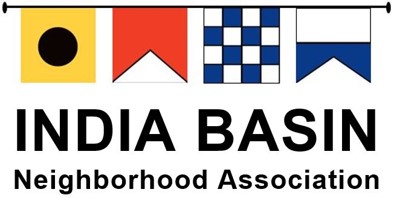In response to plans to build a second power plant in our neighborhood, the Innes Avenue Coalition was formed in November, 1994. Two-years later in 1996, the Friends of India Basin came together to advocate for the acquisition and stewardship of what is now India Basin Shoreline Park. By 1998, the two groups merged to form the India Basin Neighborhood Association. Since then IBNA has worked to keep what is great about India Basin, the natural beauty and open space, while embracing the growth and development that is inevitable in a jewel like San Francisco.
Oh, and that second power plant? Not only was it never built, and by 2006 the PG&E Hunters Point Power Plant was removed as well. That’s the power of community.
What Do the Flags Mean?

Hundreds of years ago, before the invention of radio or other electronic communication, sailors created a system of Signal Flags to talk to people on other ships. Signal Flags use a combination of five bold colors arranged in simple shapes and patterns to send visual messages across distances. Today, Signal Flags remain an important part of the International Code of Signals and are learned and used by sailors around the world on boats and ships of all sizes. The most well-known Signal Flags are the twenty-six alphabet flags.
